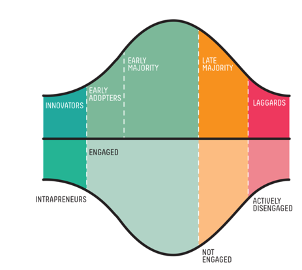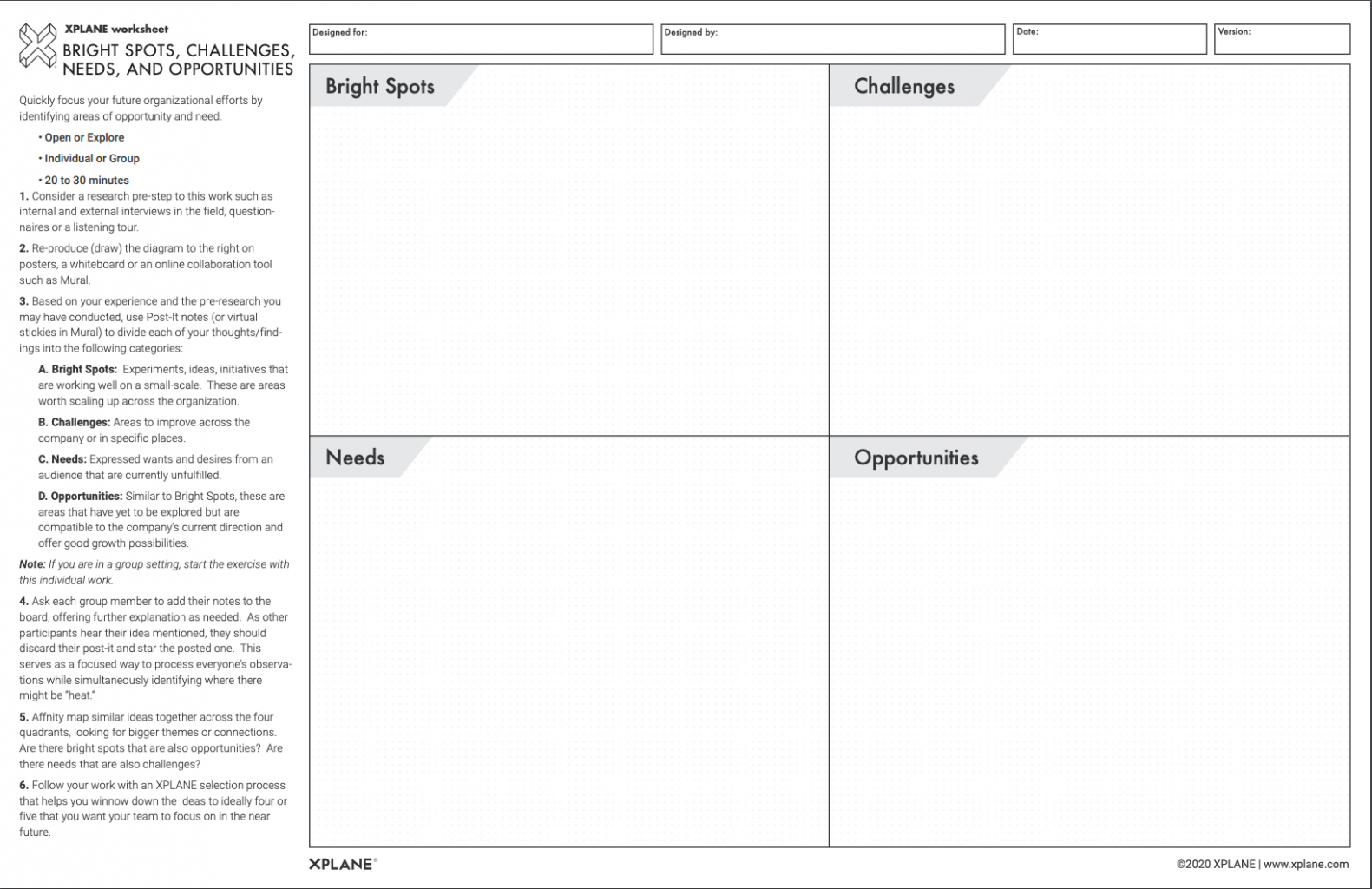Everyone wants a thriftier footprint these days. Do more with less! Cut this! Hold that!
If you’re a boss, team manager, or department head, it can feel like a laser’s focused on everything you do. Your natural tendency might be to tighten the reins on your people to ensure you have control.
Whoa there!
We actually recommend the opposite approach.
Now is the perfect time to loosen the reins a bit and turn your team into a posse of proactive, problem-solving intrapreneurs.
What’s an Intrapreneur?
Intrapreneurs are individuals who apply an entrepreneurial mindset and skill set to their role within an organization.
Many intrapreneurs are innovators. Others are efficiency experts. And some are brilliant opportunists. But all are self-motivated and comfortable with uncertainty, calculated risk, and trying something new.
In challenging times, it’s the intrapreneurs who help you, the boss, get to the other side. They are your partners in proactively identifying needs and spitballing solutions for a myriad of challenges—from remote project management to customer relations to overall efficiency.
How to Spot an Intrapreneur
So how do you identify intrapreneurs in your company or on your team?
Like a narwhal in Antarctica or a monarch butterfly on the California coast, for intrapreneurs to be seen, management needs to create the right environment.
First, it helps to understand how people, in general, respond to change.
Implicit in the word “change” is adaptation. Researcher Everett Rogers suggested you can divide any group of people into five segments based on their speed of adaptation: Innovators, Early Adopters, Early Majority, Late Majority, and Laggards.

As you can see by the graph, there is a proportionally tiny pool of Innovators, and then everyone else.
Innovators and intrapreneurs, as we noted earlier, are cut from the same cloth.
If we combine Rogers’ adaptation graph with the various engagement levels we see regularly in a typical company, innovators and intrapreneurs represent about the same percentage of a population—around 2% to 5%.

Even though innovators and intrapreneurs make up a very small segment of the population, they aren’t hard to identify because they are so unique.
When searching for intrapreneurs in your own organization, look for team members who:
- seek out solutions to roadblocks
- like to experiment
- are creative problem-solvers
If you are having difficulty identifying ANY intrapreneurs, it’s time to consider the other critical piece of this puzzle—your company or team culture.
Overcoming Roadblocks to Intrapreneurship
Every day, XPLANE works with organizations that want to change but have embedded cultures and leadership that stand in the way, and people who exhibit less than adult behavior.
While a number of folks on your team may have an intrapreneurial mindset, they may not have had a chance to show their talents because your company culture doesn’t foster or reward self-motivated problem-solving.
So, as a team leader, department head, or boss who wants to grow, ask yourself these questions:
- Would my team call me a micromanager?
- Do I trust my team to make smart decisions without me there?
- Do I see my team as my partners or as “my staff”?
- How do I handle failures on my team, particularly when we are trying something new?
To manage a team of intrapreneurs requires starting with an environment you, the manager, create. You need to trust your team, see them as partners, and recognize failure as part of the innovation process.
See Team Members as Partners
It cannot be overstated how hard this particular culture shift is for many companies and managers, specifically those who have built successful businesses that rely on regimented, matrixed, and systemized corporate cultures.
We aren’t in those times anymore.
To do more with less money, resources, and people, every team member must now be seen as a partner who will help your company move forward.
The good news?
Even if you can’t identify your intrapreneurs or don’t have a culture that supports them naturally, there are ways to start building intrapreneurship into your environment, today.
The Intrapreneur Startup Meeting
Creating an environment that nurtures intrapreneurs is as easy as a holding a meeting and creating a follow-up plan.
Here’s how to get things rolling:
Step 1. Call a meeting with your entire team. Choose a time and place, and plan to meet for about an hour and a half. Title your get-together something optimistic, forward-looking, and positive like “Brainstorming for Bright Spots, Challenges, Needs, and Opportunities.”
Step 2. Open with empathy and what you need. Start your meeting with what you value in your team. They are smart, proactive, entrepreneurial partners and you need their help to get through these rough waters.
Step 3. Lead a brainstorm. Using the Bright Spots, Challenges, Needs, and Opportunities framework, ask the team to ideate on your company or department, or whatever is appropriate.

Ask them to identify the following:
- Bright Spots: Great work happening now that could be scaled up or emulated
- Challenges: Areas to improve
- Needs: Expressed wants and desires that are currently unfulfilled
- Opportunities: Areas to maximize or explore
We recommend you ask the team to think of some ideas independently, and then chat together.
After 20 minutes or so of discussion, group similar ideas together.
Step 4. Select solutions. Let the group star the ideas they think are worth exploring as a team. Select a decent number of solutions that won’t overwhelm the workload you already have.
Step 5. Do! This is where your intrapreneurs will self-identify. Instead of making assignments, let group members choose the projects they want to tackle. Move forward with planning.
Leading Intrapreneurs
You are about to embark on an entirely new way of working.
As the boss, think through the following questions in advance of the meeting:
- Are you ready to change the way you manage?
- How will you coach, guide, and mentor your team moving forward?
- What happens when ideas don’t work out or someone isn’t the right fit for the project?
- How will you fold these new ideas into the work your team already has on their plate?
If this feels like something you want to try, experiment with a small project first. No one runs a marathon after running one time around the block.
Expect that some folks will take to this new way of working like ducks to water and others will not.
Ultimately, the goal is to foster your intrapreneurs and create a culture where everyone sees themselves as part of the solution. That’s when true progress takes root.
